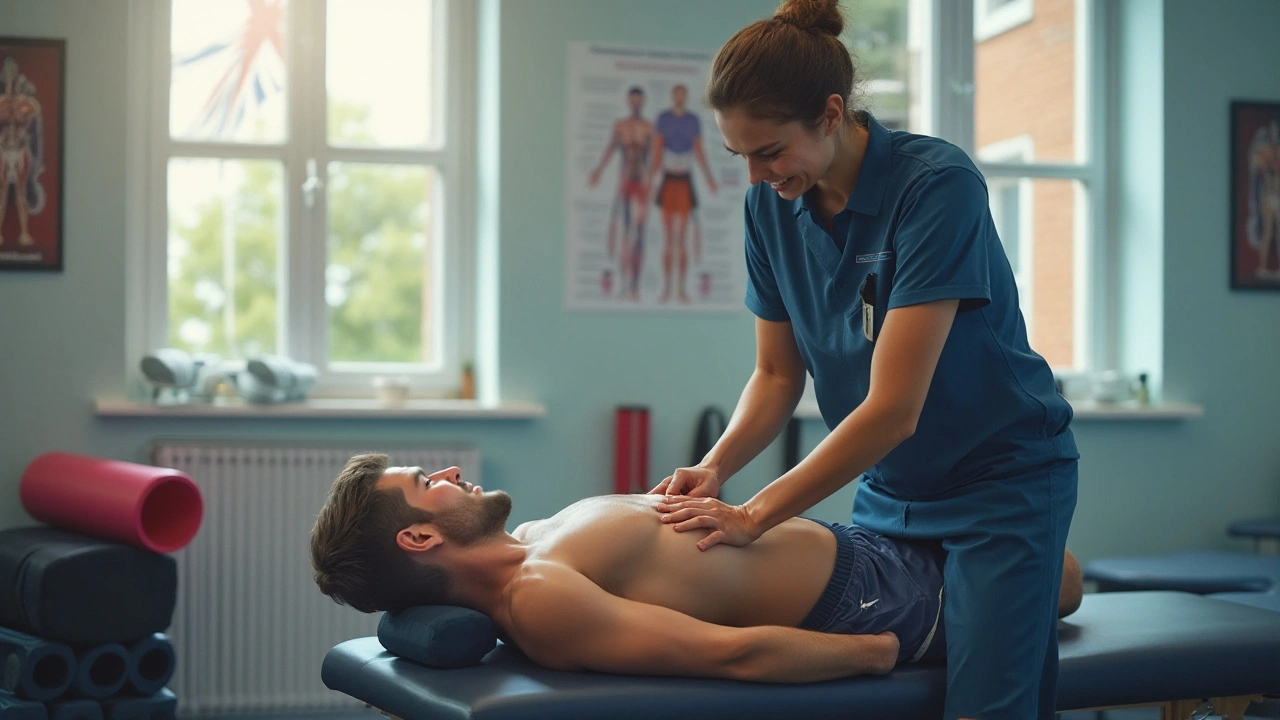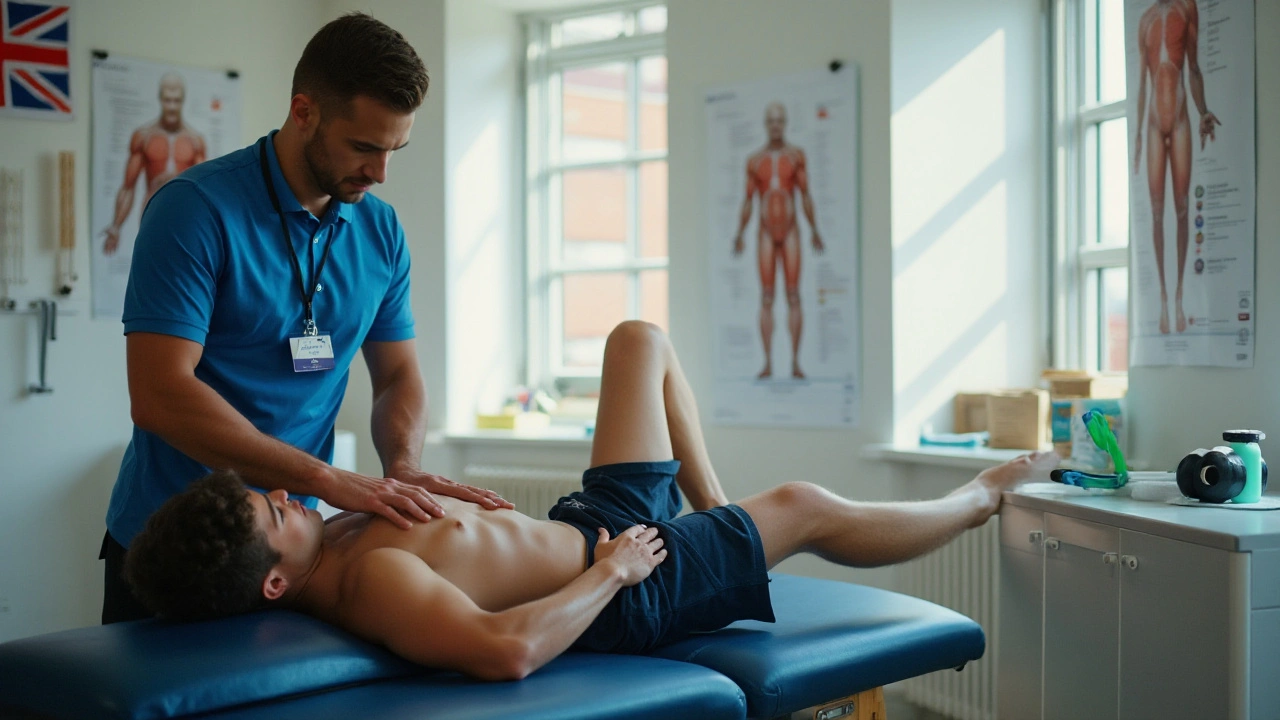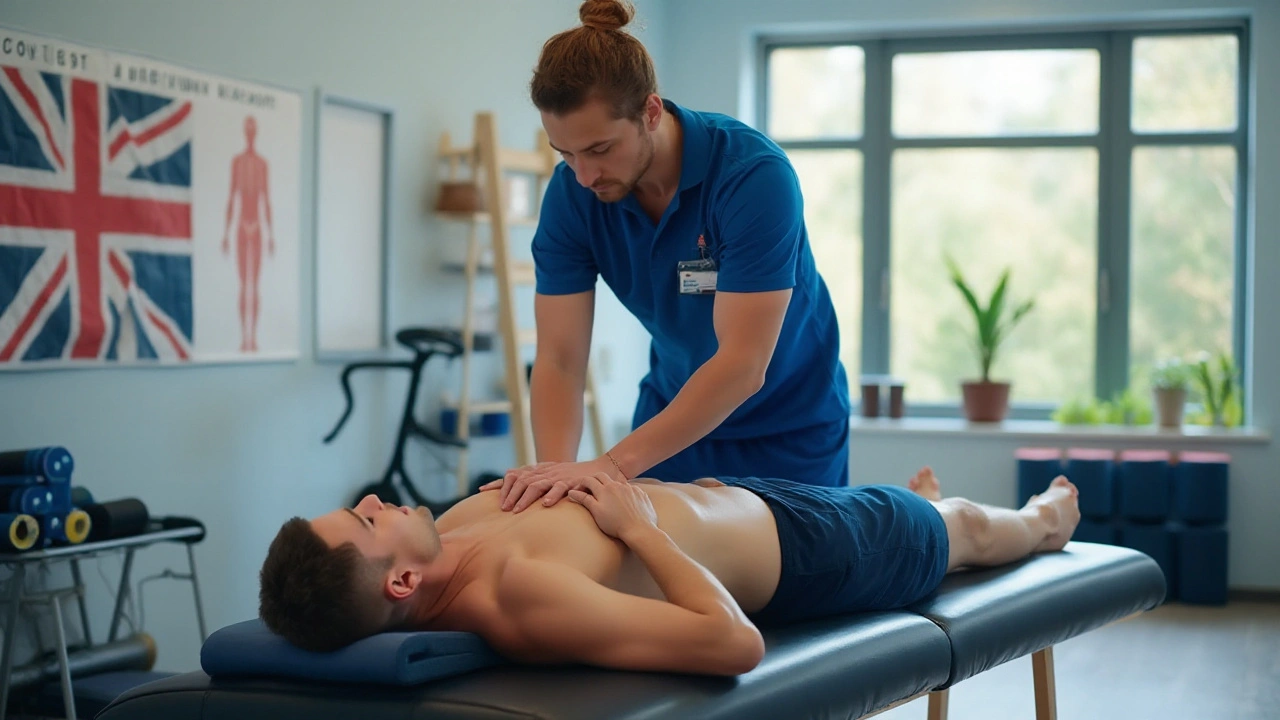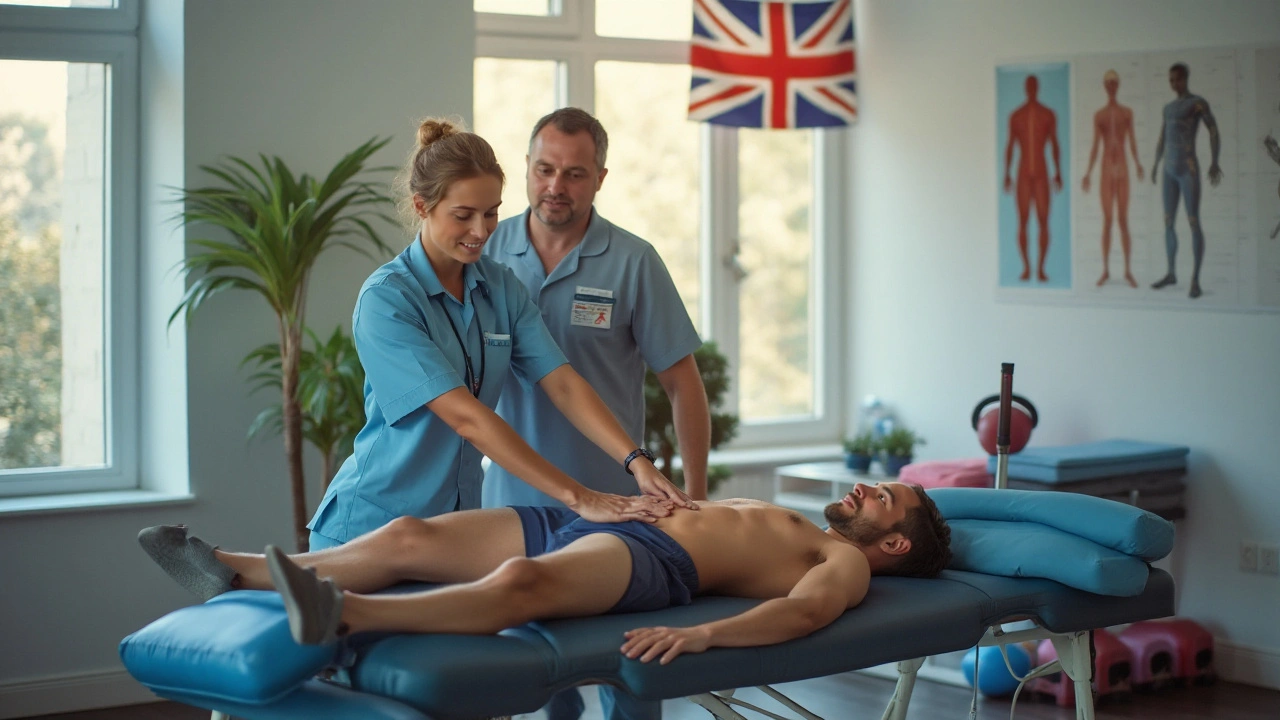Sports massage is more than just a luxurious treat; it's an essential tool for athletes aiming to enhance their performance and recover faster. Whether you're a professional player or weekend warrior, integrating this form of massage can have profound impacts on your athletic abilities.
This guide will delve into what sports massage entails, it's myriad benefits, and practical tips to make the most out of each session. Let's explore how you can leverage this technique to stay ahead in your game.
- Understanding Sports Massage
- Benefits of Sports Massage
- Techniques and Methods
- Tips for Incorporating Sports Massage
Understanding Sports Massage
When we talk about sports massage, we're referring to a form of massage therapy specifically designed to help athletes perform at their best and recover swiftly from injuries or intense training sessions. This isn't your typical relaxation massage; it focuses on specific muscle groups used during physical activity and involves a variety of techniques aimed at improving flexibility, reducing tension, and enhancing circulation.
One of the primary goals of sports massage is to manage the strain and tension that build up in the body's soft tissues during exercise. Unlike other forms of massage that focus on relaxation, sports massage is about optimizing performance and preventing injuries. Techniques range from traditional stretching and compressions to more specialized methods like cupping and taping, all tailored to the athlete's needs at different stages of their training cycle.
Interestingly, ancient civilizations have long recognized the benefits of specialized massage for athletes. Ancient Greeks used massage as an integral part of their training regimens, understanding its role in maintaining peak physical condition. Today, sports massage is backed by modern science. Research shows that regular sessions can reduce the risk of injury by improving muscle flexibility and joint range of motion.
Sports massage can be categorized into four main types based on the timing relative to athletic activity: pre-event, post-event, restorative, and rehabilitative. Pre-event massage is designed to prepare muscles for upcoming activity, often lasting between 10 to 15 minutes. This massage is generally brisk and focuses on stimulating the muscles. Post-event massage, on the other hand, helps athletes cool down and recover from physical exertion. It tends to be more slow-paced and focuses on relieving muscle soreness and reducing inflammation.
Restorative massage is part of an athlete's regular training routine and aims to maintain muscle health and enhance performance. This type of massage helps identify and address any potential issues before they turn into injuries. Finally, rehabilitative massage is used to aid the recovery from injuries. It involves techniques that promote healing by increasing blood flow to the affected area and reducing scar tissue formation.
As Dr. Jeffrey Forman, a well-known sports physician, once said, "Regular sports massage sessions are a vital part of an overall training program. They help maintain muscle health and resilience, while also preventing injuries."
With the surge in popularity of athletic events and lifestyle fitness, sports massage has become more accessible and increasingly integrated into comprehensive fitness programs. Athletes from various disciplines, ranging from track and field to team sports, utilize these techniques to stay at the top of their game. The key is to find a qualified, experienced therapist who understands the unique demands of the specific sport.
In conclusion, sports massage plays a crucial role in an athlete's life, aiding in performance enhancement, injury prevention, and swift recovery. By integrating regular sports massages into your routine, you're not just pampering your muscles–you're investing in your athletic future.

Benefits of Sports Massage
Sports massage offers a multitude of benefits for athletes, making it an indispensable component of many training regimens. One of the primary advantages is the reduction of muscle tension. Intensive workouts can place a lot of strain on muscles, leading to stiffness and pain. A targeted massage helps to relax these muscles, easing tension and allowing for better flexibility. This is especially crucial for athletes who need a wide range of motion to perform at their best.
Another significant benefit is improved circulation. During a sports massage, the pressure applied to muscle tissues helps to enhance blood flow. This increased circulation supplies muscles with more oxygen and nutrients, which are essential for repair and growth. As a result, athletes experience quicker recovery times and are less prone to injuries. This is because well-nourished muscles are more resilient and can handle strain more effectively.
Pain reduction is yet another compelling reason to consider sports massage. When muscles are sore, it can be challenging to maintain a rigorous training schedule. The hands-on technique of massage helps to release endorphins, which act as natural pain relievers. This means that athletes can continue their training with minimal downtime, staying on track with their performance goals. As sports physiologist Anthony Matthew states,
“Incorporating regular sports massage can significantly reduce the risk of chronic pain and enhance overall athletic performance.”
A lesser-known but equally important benefit is the psychological relief that sports massage provides. The mental focus required for high-level athletic performance can be overwhelming. Massage sessions offer a valuable opportunity to relax and unwind, reducing stress levels and improving mental clarity. This mental rejuvenation can be a game-changer in high-pressure situations, allowing athletes to stay focused and composed.
Furthermore, sports massage can help in detecting and preventing potential injuries. Experienced therapists can identify areas of tightness and tension that may not yet be causing pain but could lead to problems if left unchecked. Early detection allows for timely intervention, preventing minor issues from becoming major setbacks.
Enhanced Performance
The impact of sports massage on athletic performance is remarkable. By promoting muscle relaxation and increased circulation, athletes can achieve better performance levels. The improved flexibility that comes with reduced muscle tension allows for more efficient movement and agility, while quick recovery times mean less downtime between intense training sessions. This cumulative effect translates to sustained high performance over time.
Data on Sports Massage Benefits
Research supports the myriad benefits of sports massage. In a study published in the Journal of Sports Medicine, participants who received regular sports massage reported a 20% increase in flexibility and a 15% reduction in muscle soreness. Additionally, those who incorporated massage into their training routine experienced a notable improvement in overall athletic performance.
| Benefit | Percentage |
|---|---|
| Increase in flexibility | 20% |
| Reduction in muscle soreness | 15% |

Techniques and Methods
When it comes to sports massage, the approach differs significantly from your typical relaxation massage. These massages aim to target specific muscle groups that undergo the most strain during athletic activities. Various techniques can be employed based on the athlete's needs and the type of sport they engage in.
Effleurage
Effleurage is often the starting point for many sports massages. This method involves long, smooth strokes that help warm up the muscle tissue and improve circulation. By bringing more oxygenated blood to muscle fibers, effleurage reduces tension and prepares the muscles for deeper massage techniques.
Petrissage
Petrissage focuses on kneading the muscles, helping to break down adhesions or knots that may have formed due to intense training. This technique can restore elasticity and improve muscle flexibility. Petrissage is beneficial for improving lymphatic drainage, which means it can also help in reducing swelling and fatigue.
Friction
Friction techniques involve applying deep pressure to muscle fibers, particularly around joints and connective tissue. This method is useful for breaking down scar tissue and improving the range of motion. According to Dr. Jane Smith, a leading expert in sports therapy,
“Friction techniques can be particularly effective in treating chronic injuries and helping athletes return to peak performance levels.”
Tapotement
Tapotement, or rhythmic tapping, stimulates nerves and enhances muscle tone. This technique can be applied using the sides of the hands, fingers, or even cupped hands. It is especially useful for athletes who need a quick boost before an event or game. Tapotement can also aid in waking up tired muscles after a long and strenuous activity.
Compression
Compression techniques involve applying and releasing pressure quickly on large muscle groups. This method helps improve circulation and prepares muscles for exertion. It is particularly beneficial during warm-ups, allowing athletes to get into the zone quickly. Compression can also help relieve muscle cramps and stiffness post-exercise.
Stretching
Integrating stretching into a sports massage is critical for improving flexibility and preventing injuries. Stretching techniques can be passive or active, depending on the specific needs of the athlete. Not only do these techniques help in elongating muscle fibers, but they also contribute to better muscle coordination and balance.
Trigger Point Therapy
Trigger point therapy identifies and targets specific points of pain or tension within the muscle tissue. By applying direct pressure to these spots, therapists can relieve tension and improve overall muscle function. This method is particularly effective for athletes who suffer from repetitive strain injuries.
Each of these techniques can be customized to address individual needs, making sports massage an invaluable part of any athlete's routine. Enhanced athletic performance often hinges on not just how hard one trains, but also how well one recovers. Incorporating these methods can go a long way in achieving that balance.

Tips for Incorporating Sports Massage
Adding sports massage into your routine can seem like a luxury, but it’s actually a highly effective tool to improve your athletic performance. Knowing how to integrate this powerful practice effectively is key. Here are some actionable tips to incorporate sports massage into your fitness regimen.
First, timing is critical. Schedule your sports massages strategically around your training sessions and competitions. Ideally, get a massage 2-3 days before a big event to ensure your muscles are relaxed but not overly tender. Post-event or post-training massages help reduce muscle soreness and speed up recovery times.
Next, communicate with your massage therapist. Make sure they understand your athletic goals and any specific areas of concern. Being open about your physical condition will enable them to focus on trouble spots and optimize the benefits. Don't hesitate to give feedback during the session as well to ensure the pressure and techniques used are effective for you.
Integrating a variety of massage techniques can yield better results. Deep tissue massage addresses chronic muscle tension, while trigger point therapy targets specific knots. Swedish massage techniques promote relaxation and improve blood circulation. Combining these methods can enhance the overall benefits you receive.
Consistency is key. Establish a regular massage routine to maintain muscle health and flexibility. Consider bi-weekly or monthly sessions, depending on your training intensity and recovery needs. Consistent massages contribute to long-term improvements in muscle function and reduced risk of injuries.
Incorporate self-massage techniques into your routine between professional sessions. Use foam rollers, massage balls, and similar tools to target tight muscles and improve mobility. Self-massage can serve as a great supplement to your professional massages or a quick fix in a pinch.
Stay hydrated. Drinking plenty of water before and after your massage helps flush out toxins released from muscle tissues during the session. Hydration aids in recovery and reduces muscle stiffness, making your massage session more effective.
Listen to your body and adjust based on how you feel post-massage. Some athletes may feel invigorated, while others might need additional rest. Your response to massage can vary, so be attentive to your body's signals to determine the best follow-up actions.
Lastly, educate yourself on the benefits of specific techniques. According to a study published in the Journal of Sports Physical Therapy, incorporating regular sports massages can decrease muscle stiffness and improve joint flexibility. These benefits directly translate to better athletic performance.
“To keep the body in good health is a duty… otherwise we shall not be able to keep our mind strong and clear.” – Buddha
Incorporating sports massage into your routine may seem daunting at first, but start small and build up. Make it a habitual part of your training, just like stretching or strength work, and soon the benefits will become evident in your performance and recovery times. Consistency, communication, and self-awareness are your best tools for leveraging sports massage to its fullest potential.

